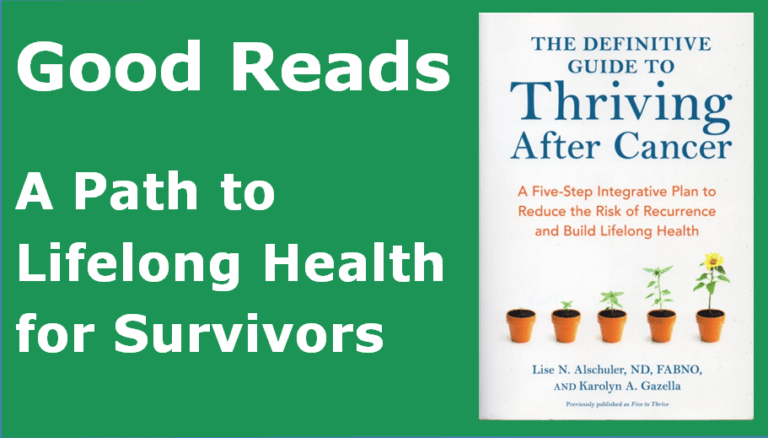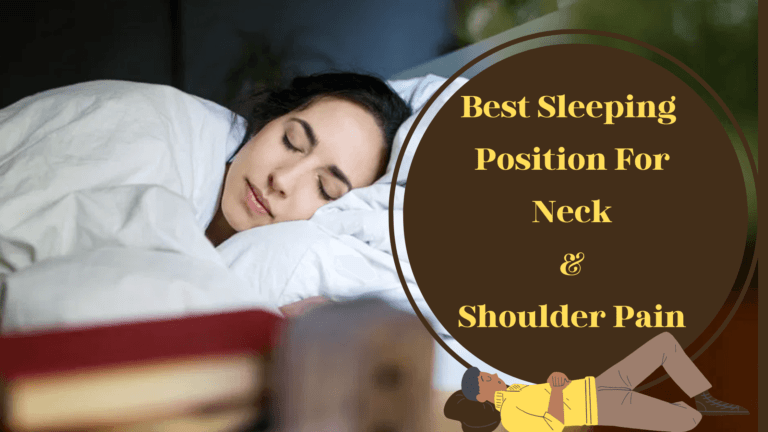6 Ways To Find Calm In The Storm!

Many people with pain are so overwhelmed that they can’t function well— physically, emotionally, and/or cognitively. A major contributing factor to this “meltdown” is a hyperaroused nervous system, which manifests as feelings of anxiety and stress. If it were possible to look at the nervous system of almost anyone suffering from chronic pain, you would see that it’s all revved up and unable to rest. There’s a torrent of chatter flying between the amygdala, the hippocampus, the insular cortex, and other parts of the brain. Mental and emotional alarm bells are ringing louder and more often than they should, and the parts of the brain that should say “shhh” and calm things down aren’t doing the job very well.
In a healthy body, there’s a system of checks and balances, with some brain structures amplifying sensations/emotions, and others quieting them. The system is flexible, allowing for sudden increases in physical and/or emotional demands and easing back to calm.
But when you’re in chronic pain, the brain is thrown into panic mode and overwhelmed, struggling to manage pain until the body’s system calms down. So examining stress—the experience of it, the way your mind and body respond to what is happening—is an important aspect of how to control chronic pain.
The Need to Recalibrate
Stress triggers at least two bodily systems: the nervous system and the endocrine system. These two physiologic systems, in turn, trigger the body’s immune system.
The autonomic nervous system (which controls heartbeat, body temperature and digestion) is divided into two branches: the sympathetic nervous system (SNS) and the parasympathetic nervous system (PNS). These branches are opposites in that one revs things up, while the other calms them down. However, because chronic pain is a stressful experience, people can become trapped in a nearly perpetual state of fight-or-flight. Caught in the storm, they cannot be calmed.
The Stressed-Out “Pain Brain”
The stress felt by chronic pain patients may be directly related to physical pain. But emotional stress is almost always present as well, due to frustrations, fears, and the difficulties associated with constant pain. And when a healthy brain is physically altered and becomes a “pain brain,” thinking may prove difficult, increasing mental stress.
Inside the stressed-out pain patient, the amygdala is hyper-stimulated and sees bad news everywhere, part of the reason that people in pain can find themselves awash in negative emotions like anger, fear, and depression.
Normally, other areas of the brain, like the anterior cingulate cortex (ACC), help restrain the amygdala, making sure that your emotions don’t run away with you. Unfortunately, the changes that produce the “pain brain” interfere with the ACC’s ability to regulate the amygdala, so negative feelings can flow unrestrained.
Further triggering the troubled amygdala is the insular cortex (IC). The IC, another key processor of pain information, eggs on the amygdala even more, increasing and perpetuating feelings of fear.
Making matters worse, the stress of chronic pain hammers the hippocampus, the portion of the brain that helps regulate learning and memory. When chronic pain upsets the hippocampus, it can make learning new things difficult, or even impact memory.
These physical changes have been studied using brain-imaging techniques that track the parts of the brain that light up when subjects engage in various tasks. It is clear that physical changes to the brain make it difficult for those in chronic pain to control their emotions, make decisions, focus, reason things through, and much more.
How to Control Chronic Pain by Finding the Calm
Calming the storm of the stressed “pain brain” is critical to effective pain management. The more techniques you learn, the more empowered you will be. Here’s a brief look at each; you can read the entire chapter in Conquer Your Chronic Pain: A Life-Changing Drug-Free Approach for Relief, Recovery, and Restoration for more info.
1. Still Meditation
Meditation calms the brain and decreases anxiety, depression, and other destructive feelings that contribute to hyper-arousal and amplify pain.
Get comfy on a chair or floor, close your eyes, take a deep breath, and slowly exhale. Focus on the present moment. The idea is to give your mind a rest from its daily patterns of thinking, analyzing, remembering, and planning and to minimize the anxiety, anger, depression, and other feelings that contribute to your pain. Focus on something else, something mundane so your mind won’t be too busy but engaged enough to block your regular thinking patterns. Most people focus on breathing. As you become more comfortable with the process, try to meditate for longer periods, and perhaps add an extra session at another time during the day to help you “unplug” or get through a rough moment.
Meditation can help control fear. Listen to your body. When in pain, notice how fast your heart is beating. How’s your breathing? Try a few minutes of meditation to slow your heart rate and breathing.
2. Active Meditation
Active meditation means meditating while engaging in some type of physical movement. Done in conjunction with the right kind of activity in the right environment, active meditation can do much to quiet a hyper-aroused, stressed-out nervous system.
A classic example of active meditation is walking. Focusing on the act of walking, just like focusing on your breath, will help you clear away distractions, reduce negative thinking and calm your mind. Be mindful of how each body part feels, and how all parts contribute to the movement.
Even without meditation, walking can help improve your psychological and physical states. Consider your outdoor time therapeutic.
3. Breathing Exercise
Your breath is one of the best tools for managing stress and pain; there is no medicine or surgery more effective at “calming the storm” than proper breathing. Slow, rhythmic breathing soothes. The physical rhythms of the diaphragm moving up and down and the lungs expanding and contracting, along with the audible whisper of air flowing in and out of your nose, can be the calming “music” that gets you through the storm.
Listen to your breath as you inhale and exhale at a leisurely pace … one, two, five, even ten times at a stretch. This simple breathing exercise will do much to calm your nervous system.
Remember that you can consciously control the quality and length of your breath to calm life’s storms.
Here are a few types of breathing exercises:
Diaphragmatic Breathing
The goal here is to relax the belly when you inhale. Lie flat, relax your abdomen, and slowly inhale, allowing your belly to expand. Then, allow your belly to fall slowly as you exhale. If you tense your abdomen for a few breathing cycles, then relax it for a few, you’ll notice how much easier it is to breathe when it’s relaxed and your diaphragm does the “breathing work” for you. Diaphragmatic breathing maximizes the amount of oxygen that goes into your bloodstream, interrupts the fight-or-flight response, and encourages your body’s relaxation response.
Try diaphragmatic breathing for a few minutes each day, focusing on your belly as it moves up and down. Listen to the air passing in and out through your nostrils. Don’t worry if your mind wanders; just bring your attention back to breathing.
If you find yourself becoming angry or tense, try placing your hand on your belly so you can feel the in-and-out motion as you breathe. Concentrate on your breath, inviting negative emotions to drift away.
4-7-8 Breathing
Sit up or lie down, but keep your back straight. Place the tip of your tongue against the back of your upper front teeth. Relax the rest of your tongue. Then keep your tongue in this position and open your mouth, holding it open as you exhale. Listen to the “whooshing” sound your breath makes as it exits.
Close your mouth and inhale through your nose, quietly, to the count of 4.
Stop inhaling and hold your breath to the count of 7.
Now breathe out through your mouth as described, with the tip of your tongue against your back teeth, emptying your lungs to the count of 8.
Count silently and be aware of your breath moving in and out of your nose, throat and lungs. Just a few rounds should be all it takes to achieve a sense of calm. Then, over the course of a month or two, you can gradually build up to a maximum of eight rounds at a sitting.
Sun and Moon Breathing
This time-honored exercise uses touch to focus on breathing. Using your left index finger, gently close your right nostril, and exhale through your left nostril. Then inhale through your left nostril.
Release your right nostril and, using your left thumb, gently close your left nostril while exhaling through the right nostril. Then inhale through the right nostril.
Alternate nostrils, gently exhaling and inhaling. Continue for several minutes. Try closing your eyes and focusing on the breath as it leaves and then enters through the open nostril. Feel the air move through your nostril and down into your lungs.
4. Art Therapy
It sounds simple, but art therapy is powerful. The act of creating is a form of meditation, clearing the mind and quieting the storm. For some, a breakthrough comes from examining what was drawn, then using it as a clue to guide treatment. Anyone can put colors and shapes on paper, and what counts is using art as a “mirror” to see inside yourself and recognize and release hidden emotions that may be contributing to your pain.
The US military recently discovered the power of art therapy for treating PTSD. Creating art helps unlock and release unexpressed emotions, making it easier to process feelings meaningfully.
Although you can certainly do art projects on your own, powerful emotional healing can result from working with a trained art therapist, often in a group setting.
One of my favorite projects is The Mask. A person is given a mask that covers the face. Then he or she is asked to paint the outside of the mask to represent the way he thinks others see him or paint the inside as he sees himself. I’m often surprised at the differences between one side of the mask and the other. In one case, the outside of the mask was brightly colored, friendly, and smiling, while the inside looked like there were spikes plunging into the patient’s head. This was the first time this stoic and uncomplaining patient revealed his inner pain—even to himself!
Making a mandala, or circle, is an ancient therapeutic art project. The circle, a symbol of wholeness, harmony, and the rhythms of nature/life cycle has no beginning or end, no angles or hard edges. Many cultures and religions, including Native Americans, Hindus, and Buddhists, have used circles to draw spiritual energy, speed healing, and aid meditation.
Don’t want to paint, draw or sculpt? Gather images from magazines that trigger emotional responses and that represent how you feel or what you love. No matter the form, art therapy can help release feelings by making an end-run around subconscious barriers erected to hold those terrible feelings at bay.
5. Yoga
Yoga is an effective tool for managing stress. The combination of postures, breathing, and meditative practice induces parasympathetic relaxation. Scientific studies show that yoga triggers long-term neuroplastic brain changes, in part through epigenetic changes to genes involved in regulating the body’s stress response. In other words, yoga alters the stress response for the better on the genetic level. These changes are also linked to the aging process and maybe a way of increasing longevity.
You may find yoga tricky if you’re suffering from chronic pain, as some poses may be difficult or impossible, but be aware that there are many kinds of yoga classes. Gentle yoga involves easy stretches and mild poses. Restorative yoga utilizes bolsters, blankets, blocks, and other props that support you and bring about maximum relaxation.
Think of yoga as therapy, rather than a group exercise. Your goal is to reduce anxiety, lower stress, and calm your “pain brain.” Find a teacher who can help you get started simply, and work around any limitations.
6. EMDR
EMDR (eye movement desensitization and reprocessing) is a well-researched and effective treatment for trauma that helps the mind process traumatic memories in a way that leads to a peaceful resolution.
This relatively new therapy uses rhythmic eye movements to help reduce the power of emotionally charged memories linked to trauma and PTSD. The therapy consists of bringing to mind a troubling memory or thought as the patient carefully watches the therapist’s finger moving back and forth across her face. Forcing the brain to focus on two things at once—reliving the memory and watching the finger—for several thirty-second sessions helps the brain process the memory and reduce its “punch.”
EMDR was created by psychologist Francine Shapiro in the late 1980s as a treatment for overwhelmed brains unable to cope with the consequences of traumatic experiences. The therapy is performed by mental health practitioners who have been specifically trained in the technique.
MOVING ON
Much of what we’ve talked about in this chapter has to do with setting aside negative thinking and calming the storm within. Read more of Dr. Abaci’s book to learn what to do with the negative thoughts that still remain, and how to reframe them in a way that removes their sting and replaces them with positive thoughts.
Dr. Edward Zelman
Dr. Edward Zelman is a distinguished and highly respected medical professional who has dedicated his career to the field of general medicine. With a profound commitment to patient care and a wealth of knowledge acquired over decades of practice, Dr. Zelman has earned a reputation as a trusted healthcare provider in his community. With a career defined by excellence and an unwavering commitment to the betterment of his patients and the broader community, Dr. Edward Zelman stands as a pillar of the medical field, dedicated to the principles of healing and compassionate care. At present, Dr. Edward Zelman is researching safe and effective natural remedies that can restore as well as maintain the youthful functioning of the body.
View All By Dr. Edward






